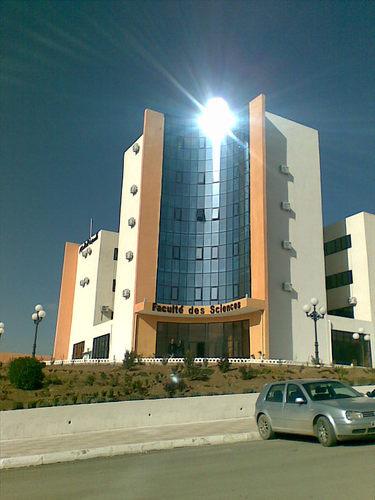University SÃĐtif 1 FERHAT ABBAS Faculty of Sciences
DÃĐtail de l'auteur
Auteur Abdelkhabir Arab |
Documents disponibles écrits par cet auteur


 Ajouter le rÃĐsultat dans votre panier Affiner la recherche
Ajouter le rÃĐsultat dans votre panier Affiner la recherche
Titre : Startup Project: Mobile Application "School Linkâ Type de document : texte imprimÃĐ Auteurs : Mohamed Charaf Eddine Saadi, Auteur ; Abdelkhabir Arab ; Kara-Mohamed ,Chafia, Directeur de thÃĻse Editeur : Setif:UFA AnnÃĐe de publication : 2024 Importance : 1 vol (110 f .) Format : 29 cm Langues : Anglais (eng) CatÃĐgories : ThÃĻses & MÃĐmoires:Informatique Mots-clÃĐs : Informatique
Startup ProjectIndex. dÃĐcimale : 004 - Informatique RÃĐsumÃĐ :
In todayâs fast-steps technology world, communication between schools and parents
is important for academic and student success. The âSchool Linkâ platform is designed
to facilitate seamless communication and collaboration and aims to bridge the
communication gap by providing a user-friendly platform for teachers and parents to
interact within the educational environment in schools online.
The objective of this thesis is to develop a mobile application and web site that will serve
the educational frame.The developed web site allows administrators to manage its
students and teachers and classes related by the mobile application that allows
studentâs parents and teachers to access, with many functions and features. The main
features include real-time messaging, progress tracking, enabling parents to stay
informed about their child's academic performance and school activities.Note de contenu : Sommaire
Contents i
List of figures ii
Abbreviations list iii
List of tables v
General introduction vi
Chapter 1 general
1.1 Introduction âĶâĶâĶâĶâĶâĶâĶâĶâĶâĶâĶâĶâĶâĶâĶâĶâĶâĶâĶâĶâĶâĶâĶâĶâĶâĶâĶâĶâĶâĶâĶâĶâĶâĶâĶâĶâĶâĶâĶâĶâĶâĶâĶâĶâĶâĶâĶâĶâĶ.âĶâĶâĶâĶâĶâĶâĶâĶâĶâĶâĶâĶâĶâĶ 14
1.2 Problems of communication between schools and parentâĶâĶâĶâĶâĶâĶâĶâĶâĶâĶâĶâĶâĶâĶâĶâĶâĶâĶâĶâĶâĶ.âĶâĶâĶâĶâĶâĶâĶâĶâĶâĶâĶâĶ14
1.3 Comparison between traditional communication and digital communication Platforms at schoolâĶâĶâĶâĶâĶâĶ16
1.3.1 Traditional communicationâĶâĶâĶâĶâĶâĶâĶâĶâĶâĶâĶâĶâĶâĶâĶâĶâĶâĶâĶâĶâĶâĶâĶâĶâĶâĶâĶâĶâĶâĶâĶâĶâĶâĶâĶâĶâĶâĶâĶâĶâĶâĶâĶâĶâĶâĶâĶâĶâĶâĶâĶ.16
1.3.2 digital communication platformsâĶâĶâĶâĶâĶâĶâĶâĶâĶâĶâĶâĶâĶâĶâĶâĶâĶâĶâĶâĶâĶâĶâĶâĶâĶâĶâĶâĶâĶâĶâĶâĶâĶâĶâĶâĶâĶâĶâĶâĶâĶâĶâĶâĶâĶâĶâĶ17
1.3.3 Examples of school platforms âĶâĶâĶâĶâĶâĶâĶâĶâĶâĶâĶâĶâĶâĶâĶâĶâĶâĶâĶâĶâĶâĶâĶâĶâĶâĶâĶâĶâĶâĶâĶâĶâĶâĶâĶâĶâĶâĶâĶâĶâĶâĶâĶâĶâĶâĶâĶâĶâĶ.19
1.3.3.1 Difference between School-Link Platform and this exemples âĶâĶâĶâĶâĶâĶâĶâĶâĶâĶâĶâĶâĶâĶâĶâĶâĶâĶâĶâĶâĶâĶâĶâĶâĶ21
1.4 Mobile applicationsâĶâĶâĶâĶâĶâĶâĶâĶâĶâĶâĶâĶâĶâĶâĶâĶâĶâĶâĶâĶâĶâĶâĶâĶâĶâĶâĶâĶâĶâĶâĶâĶâĶâĶâĶâĶâĶâĶâĶâĶâĶâĶâĶâĶâĶâĶâĶâĶâĶâĶâĶâĶâĶâĶâĶâĶâĶâĶâĶ.21
1.4.1 DefinitionâĶâĶâĶâĶâĶâĶâĶâĶâĶâĶâĶâĶâĶâĶâĶâĶâĶâĶâĶâĶâĶâĶâĶâĶâĶâĶâĶâĶâĶâĶâĶâĶâĶâĶâĶâĶâĶâĶâĶâĶâĶâĶâĶâĶâĶâĶâĶâĶâĶâĶâĶâĶâĶâĶâĶâĶâĶâĶâĶâĶâĶâĶâĶ.21
1.4.2 Advantages of mobile applicationsâĶâĶâĶâĶâĶâĶâĶâĶâĶâĶâĶâĶâĶâĶâĶâĶâĶâĶâĶâĶâĶâĶâĶâĶâĶâĶâĶâĶâĶâĶâĶâĶâĶâĶâĶâĶâĶâĶâĶâĶâĶâĶâĶâĶâĶâĶ21
1.4.3 Disadvantages of mobile appsâĶâĶâĶâĶâĶâĶâĶâĶâĶâĶâĶâĶâĶâĶâĶâĶâĶâĶâĶâĶâĶâĶâĶâĶâĶâĶâĶâĶâĶâĶâĶâĶâĶâĶâĶâĶâĶâĶâĶâĶâĶâĶâĶâĶâĶâĶâĶâĶâĶ.22
1.4.4 Different types of mobile applicationsâĶâĶâĶâĶâĶâĶâĶâĶâĶâĶâĶâĶâĶâĶâĶâĶâĶâĶâĶâĶâĶâĶâĶâĶâĶâĶâĶâĶâĶâĶâĶâĶâĶâĶâĶâĶâĶâĶâĶâĶâĶâĶâĶ.22
1.4.5 Most Popular Mobile Operating SystemsâĶâĶâĶâĶâĶâĶâĶâĶâĶâĶâĶâĶâĶâĶâĶâĶâĶâĶâĶâĶâĶâĶâĶâĶâĶâĶâĶâĶâĶâĶâĶâĶâĶâĶâĶâĶâĶâĶâĶâĶâĶ..23
1.5 WebsitesâĶâĶâĶâĶâĶâĶâĶâĶâĶâĶâĶâĶâĶâĶâĶâĶâĶâĶâĶâĶâĶâĶâĶâĶâĶâĶâĶâĶâĶâĶâĶâĶâĶâĶâĶâĶâĶâĶâĶâĶâĶâĶâĶâĶâĶâĶâĶâĶâĶâĶâĶâĶâĶâĶâĶâĶâĶâĶâĶâĶâĶâĶâĶâĶâĶâĶ..25
1.5.1 DefinitionâĶâĶâĶâĶâĶâĶâĶâĶâĶâĶâĶâĶâĶâĶâĶâĶâĶâĶâĶâĶâĶâĶâĶâĶâĶâĶâĶâĶâĶâĶâĶâĶâĶâĶâĶâĶâĶâĶâĶâĶâĶâĶâĶâĶâĶâĶâĶâĶâĶâĶâĶâĶâĶâĶâĶâĶâĶâĶâĶâĶâĶâĶâĶ.25
1.5.2 Websites HistoryâĶâĶâĶâĶâĶâĶâĶâĶâĶâĶâĶâĶâĶâĶâĶâĶâĶâĶâĶâĶâĶâĶâĶâĶâĶâĶâĶâĶâĶâĶâĶâĶâĶâĶâĶâĶâĶâĶâĶâĶâĶâĶâĶâĶâĶâĶâĶâĶâĶâĶâĶâĶâĶâĶâĶâĶâĶâĶ.25
1.5.3 How a website worksâĶâĶâĶâĶâĶâĶâĶâĶâĶâĶâĶâĶâĶâĶâĶâĶâĶâĶâĶâĶâĶâĶâĶâĶâĶâĶâĶâĶâĶâĶâĶâĶâĶâĶâĶâĶâĶâĶâĶâĶâĶâĶâĶâĶâĶâĶâĶâĶâĶâĶâĶâĶâĶâĶâĶ.25
1.5.4 Types of WebsitesâĶâĶâĶâĶâĶâĶâĶâĶâĶâĶâĶâĶâĶâĶâĶâĶâĶâĶâĶâĶâĶâĶâĶâĶâĶâĶâĶâĶâĶâĶâĶâĶâĶâĶâĶâĶâĶâĶâĶâĶâĶâĶâĶâĶâĶâĶâĶâĶâĶâĶâĶâĶâĶâĶâĶâĶâĶ..26
1.5.5 Components of a websiteâĶâĶâĶâĶâĶâĶâĶâĶâĶâĶâĶâĶâĶâĶâĶâĶâĶâĶâĶâĶâĶâĶâĶâĶâĶâĶâĶâĶâĶâĶâĶâĶâĶâĶâĶâĶâĶâĶâĶâĶâĶâĶâĶâĶâĶâĶâĶâĶâĶâĶâĶâĶ.27
1.5.6 Categories of a websitesâĶâĶâĶâĶâĶâĶâĶâĶâĶâĶâĶâĶâĶâĶâĶâĶâĶâĶâĶâĶâĶâĶâĶâĶâĶâĶâĶâĶâĶâĶâĶâĶâĶâĶâĶâĶâĶâĶâĶâĶâĶâĶâĶâĶâĶâĶâĶâĶâĶâĶâĶâĶâĶ27
1.6 ConclusionâĶâĶâĶâĶâĶâĶâĶâĶâĶâĶâĶâĶâĶâĶâĶâĶâĶâĶâĶâĶâĶâĶâĶâĶâĶâĶâĶâĶâĶâĶâĶâĶâĶâĶâĶâĶâĶâĶâĶâĶâĶâĶâĶâĶâĶâĶâĶâĶâĶâĶâĶâĶâĶâĶâĶâĶâĶâĶâĶâĶâĶâĶâĶâĶâĶ.27
Chapter 2 Needs analysis and system design
2.1 IntroductionâĶâĶâĶâĶâĶâĶâĶâĶâĶâĶâĶâĶâĶâĶâĶâĶâĶâĶâĶâĶâĶâĶâĶâĶâĶâĶâĶâĶâĶâĶâĶâĶâĶâĶâĶâĶâĶâĶâĶâĶâĶâĶâĶâĶâĶâĶâĶâĶâĶâĶâĶâĶâĶâĶâĶâĶâĶâĶâĶâĶâĶâĶâĶâĶ.29
2.2 Needs analysisâĶâĶâĶâĶâĶâĶâĶâĶâĶâĶâĶâĶâĶâĶâĶâĶâĶâĶâĶâĶâĶâĶâĶâĶâĶâĶâĶâĶâĶâĶâĶâĶâĶâĶâĶâĶâĶâĶâĶâĶâĶâĶâĶâĶâĶâĶâĶâĶâĶâĶâĶâĶâĶâĶâĶâĶâĶâĶâĶâĶâĶâĶâĶ29
2.2.1 Functional requirementsâĶâĶâĶâĶâĶâĶâĶâĶâĶâĶâĶâĶâĶâĶâĶâĶâĶâĶâĶâĶâĶâĶâĶâĶâĶâĶâĶâĶâĶâĶâĶâĶâĶâĶâĶâĶâĶâĶâĶâĶâĶâĶâĶâĶâĶâĶâĶâĶâĶâĶâĶâĶâĶ29
2.2.2 Non-functional requirementsâĶâĶâĶâĶâĶâĶâĶâĶâĶâĶâĶâĶâĶâĶâĶâĶâĶâĶâĶâĶâĶâĶâĶâĶâĶâĶâĶâĶâĶâĶâĶâĶâĶâĶâĶâĶâĶâĶâĶâĶâĶâĶâĶâĶâĶâĶâĶâĶâĶâĶ30
2.3 Use casesâĶâĶâĶâĶâĶâĶâĶâĶâĶâĶâĶâĶâĶâĶâĶâĶâĶâĶâĶâĶâĶâĶâĶâĶâĶâĶâĶâĶâĶâĶâĶâĶâĶâĶâĶâĶâĶâĶâĶâĶâĶâĶâĶâĶâĶâĶâĶâĶâĶâĶâĶâĶâĶâĶâĶâĶâĶâĶâĶâĶâĶâĶâĶâĶâĶâĶ.30
2.3.1 Identification of actorsâĶâĶâĶâĶâĶâĶâĶâĶâĶâĶâĶâĶâĶâĶâĶâĶâĶâĶâĶâĶâĶâĶâĶâĶâĶâĶâĶâĶâĶâĶâĶâĶâĶâĶâĶâĶâĶâĶâĶâĶâĶâĶâĶâĶâĶâĶâĶâĶâĶâĶâĶâĶâĶâĶ30
2.3.2 Identification of use casesâĶâĶâĶâĶâĶâĶâĶâĶâĶâĶâĶâĶâĶâĶâĶâĶâĶâĶâĶâĶâĶâĶâĶâĶâĶâĶâĶâĶâĶâĶâĶâĶâĶâĶâĶâĶâĶâĶâĶâĶâĶâĶâĶâĶâĶâĶâĶâĶâĶâĶâĶâĶ31
2.3.3 Presentation of use case diagramsâĶâĶâĶâĶâĶâĶâĶâĶâĶâĶâĶâĶâĶâĶâĶâĶâĶâĶâĶâĶâĶâĶâĶâĶâĶâĶâĶâĶâĶâĶâĶâĶâĶâĶâĶâĶâĶâĶâĶâĶâĶâĶâĶâĶâĶâĶ32
2.3.4 Overall use case diagramâĶâĶâĶâĶâĶâĶâĶâĶâĶâĶâĶâĶâĶâĶâĶâĶâĶâĶâĶâĶâĶâĶâĶâĶâĶâĶâĶâĶâĶâĶâĶâĶâĶâĶâĶâĶâĶâĶâĶâĶâĶâĶâĶâĶâĶâĶâĶâĶâĶâĶâĶâĶ..32
2.4 System sequence diagramsâĶâĶâĶâĶâĶâĶâĶâĶâĶâĶâĶâĶâĶâĶâĶâĶâĶâĶâĶâĶâĶâĶâĶâĶâĶâĶâĶâĶâĶâĶâĶâĶâĶâĶâĶâĶâĶâĶâĶâĶâĶâĶâĶâĶâĶâĶâĶâĶâĶâĶâĶâĶâĶâĶ33
2.4.1 Benefits of sequence diagramsâĶâĶâĶâĶâĶâĶâĶâĶâĶâĶâĶâĶâĶâĶâĶâĶâĶâĶâĶâĶâĶâĶâĶâĶâĶâĶâĶâĶâĶâĶâĶâĶâĶâĶâĶâĶâĶâĶâĶâĶâĶâĶâĶâĶâĶâĶâĶâĶ..33
2.5 Conceptual modelling of the systemâĶâĶâĶâĶâĶâĶâĶâĶâĶâĶâĶâĶâĶâĶâĶâĶâĶâĶâĶâĶâĶâĶâĶâĶâĶâĶâĶâĶâĶâĶâĶâĶâĶâĶâĶâĶâĶâĶâĶâĶâĶâĶâĶâĶâĶâĶâĶâĶ34
2.5.1 Class diagramâĶâĶâĶâĶâĶâĶâĶâĶâĶâĶâĶâĶâĶâĶâĶâĶâĶâĶâĶâĶâĶâĶâĶâĶâĶâĶâĶâĶâĶâĶâĶâĶâĶâĶâĶâĶâĶâĶâĶâĶâĶâĶâĶâĶâĶâĶâĶâĶâĶâĶâĶâĶâĶâĶâĶâĶâĶâĶâĶâĶ.34
2.5.2 Diagramme de classe de conceptionâĶâĶâĶâĶâĶâĶâĶâĶâĶâĶâĶâĶâĶâĶâĶâĶâĶâĶâĶâĶâĶâĶâĶâĶâĶâĶâĶâĶâĶâĶâĶâĶâĶâĶâĶâĶâĶâĶâĶâĶâĶâĶâĶâĶâĶ35
2.6 ConclusionâĶâĶâĶâĶâĶâĶâĶâĶâĶâĶâĶâĶâĶâĶâĶâĶâĶâĶâĶâĶâĶâĶâĶâĶâĶâĶâĶâĶâĶâĶâĶâĶâĶâĶâĶâĶâĶâĶâĶâĶâĶâĶâĶâĶâĶâĶâĶâĶâĶâĶâĶâĶâĶâĶâĶâĶâĶâĶâĶâĶâĶâĶâĶâĶâĶ35
chapter 3 IMPLEMENTATION AND REALISATION
3.1 IntroductionâĶâĶâĶâĶâĶâĶâĶâĶâĶâĶâĶâĶâĶâĶâĶâĶâĶâĶâĶâĶâĶâĶâĶâĶâĶâĶâĶâĶâĶâĶâĶâĶâĶâĶâĶâĶâĶâĶâĶâĶâĶâĶâĶâĶâĶâĶâĶâĶâĶâĶâĶâĶâĶâĶâĶâĶâĶâĶâĶâĶâĶâĶâĶâĶ.37
3.2 Presentation of development toolsâĶâĶâĶâĶâĶâĶâĶâĶâĶâĶâĶâĶâĶâĶâĶâĶâĶâĶâĶâĶâĶâĶâĶâĶâĶâĶâĶâĶâĶâĶâĶâĶâĶâĶâĶâĶâĶâĶâĶâĶâĶâĶâĶâĶâĶâĶâĶâĶ..37
3.2.1 Visual ParadigmâĶâĶâĶâĶâĶâĶâĶâĶâĶâĶâĶâĶâĶâĶâĶâĶâĶâĶâĶâĶâĶâĶâĶâĶâĶâĶâĶâĶâĶâĶâĶâĶâĶâĶâĶ.âĶâĶâĶâĶâĶâĶâĶâĶâĶâĶâĶâĶâĶâĶâĶâĶâĶâĶâĶâĶâĶâĶâĶ.37
3.2.2 FlutterFlowâĶâĶâĶâĶâĶâĶâĶâĶâĶâĶâĶâĶâĶâĶâĶâĶâĶâĶâĶâĶâĶâĶâĶâĶâĶâĶâĶâĶâĶâĶâĶâĶâĶâĶâĶâĶâĶâĶâĶâĶâĶâĶâĶâĶâĶâĶâĶâĶâĶâĶâĶâĶâĶâĶâĶâĶâĶâĶâĶâĶâĶâĶ38
3.2.3 Visual Studio CodeâĶâĶâĶâĶâĶâĶâĶâĶâĶâĶâĶâĶâĶâĶâĶâĶâĶâĶâĶâĶâĶâĶâĶâĶâĶâĶâĶâĶâĶâĶâĶâĶâĶâĶâĶâĶâĶâĶâĶâĶâĶâĶâĶâĶâĶâĶâĶâĶâĶâĶâĶâĶâĶâĶâĶâĶâĶ39
3.2.4 FlutterâĶâĶâĶâĶâĶâĶâĶâĶâĶâĶâĶâĶâĶâĶâĶâĶâĶâĶâĶâĶâĶâĶâĶâĶâĶâĶâĶâĶâĶâĶâĶâĶâĶâĶâĶâĶâĶâĶâĶâĶâĶâĶâĶâĶâĶâĶâĶâĶâĶâĶâĶâĶâĶâĶâĶâĶâĶâĶâĶâĶâĶâĶâĶâĶâĶ.39
3.2.4.1 Flutter worksâĶâĶâĶâĶâĶâĶâĶâĶâĶâĶâĶâĶâĶâĶâĶâĶâĶâĶâĶâĶâĶâĶâĶâĶâĶâĶâĶâĶâĶâĶâĶâĶâĶâĶâĶâĶâĶâĶâĶâĶâĶâĶâĶâĶâĶâĶâĶâĶâĶâĶâĶâĶâĶâĶâĶâĶâĶâĶ39
3.2.4.2 Benefits of FlutterâĶâĶâĶâĶâĶâĶâĶâĶâĶâĶâĶâĶâĶâĶâĶâĶâĶâĶâĶâĶâĶâĶâĶâĶâĶâĶâĶâĶâĶâĶâĶâĶâĶâĶâĶâĶâĶâĶâĶâĶâĶâĶâĶâĶâĶâĶâĶâĶâĶâĶâĶâĶâĶâĶâĶ40
3.2.5 dartâĶâĶâĶâĶâĶâĶâĶâĶâĶâĶâĶâĶâĶâĶâĶâĶâĶâĶâĶâĶâĶâĶâĶâĶâĶâĶâĶâĶâĶâĶâĶâĶâĶâĶâĶâĶâĶâĶâĶâĶâĶâĶâĶâĶâĶâĶâĶâĶâĶâĶâĶâĶâĶâĶâĶâĶâĶâĶâĶâĶâĶâĶâĶâĶâĶâĶâĶ.41
3.2.6 FireBaseâĶâĶâĶâĶâĶâĶâĶâĶâĶâĶâĶâĶâĶâĶâĶâĶâĶâĶâĶâĶâĶâĶâĶâĶâĶâĶâĶâĶâĶâĶâĶâĶâĶâĶâĶâĶâĶâĶâĶâĶâĶâĶâĶâĶâĶâĶâĶâĶâĶâĶ..âĶâĶâĶâĶâĶâĶâĶâĶâĶâĶâĶâĶâĶ.42
3.2.6.1 NoSqlâĶâĶâĶâĶâĶâĶâĶâĶâĶâĶâĶâĶâĶâĶâĶâĶâĶâĶâĶâĶâĶâĶâĶâĶâĶâĶâĶâĶâĶâĶâĶâĶâĶâĶâĶâĶâĶâĶâĶâĶâĶâĶâĶâĶâĶâĶâĶâĶâĶâĶâĶâĶâĶâĶâĶâĶâĶâĶâĶâĶâĶâĶâĶ43
3.2.6.2 Key FeaturesâĶâĶâĶâĶâĶâĶâĶâĶâĶâĶâĶâĶâĶâĶâĶâĶâĶâĶâĶâĶâĶâĶâĶâĶâĶâĶâĶâĶâĶâĶâĶâĶâĶâĶâĶâĶâĶâĶâĶâĶâĶâĶâĶâĶâĶâĶâĶâĶâĶâĶâĶâĶâĶâĶâĶâĶâĶ..44
3.3 Application presentationâĶâĶâĶâĶâĶâĶâĶâĶâĶâĶâĶâĶâĶâĶâĶâĶâĶâĶâĶâĶâĶâĶâĶâĶâĶâĶâĶâĶâĶâĶâĶâĶâĶâĶâĶâĶâĶâĶâĶâĶâĶâĶâĶâĶâĶâĶâĶâĶâĶâĶâĶâĶâĶâĶâĶ..47
3.3.1 web site sideâĶâĶâĶâĶâĶâĶâĶâĶâĶâĶâĶâĶâĶâĶâĶâĶâĶâĶâĶâĶâĶâĶâĶâĶâĶâĶâĶâĶâĶâĶâĶâĶâĶâĶâĶâĶâĶâĶâĶâĶâĶâĶâĶâĶâĶâĶâĶâĶâĶâĶâĶâĶâĶâĶâĶâĶâĶâĶâĶâĶâĶ47
3.3.2 Application sideâĶâĶâĶâĶâĶâĶâĶâĶâĶâĶâĶâĶâĶâĶâĶâĶâĶâĶâĶâĶâĶâĶâĶâĶâĶâĶâĶâĶâĶâĶâĶâĶâĶâĶâĶâĶâĶâĶâĶâĶâĶâĶâĶâĶâĶâĶâĶâĶâĶâĶâĶâĶâĶâĶâĶâĶâĶâĶâĶ56
3.3.2.1 Application side for teachersâĶâĶâĶâĶâĶâĶâĶâĶâĶâĶâĶâĶâĶâĶâĶâĶâĶâĶâĶâĶâĶâĶâĶâĶâĶâĶâĶâĶâĶâĶâĶâĶâĶâĶâĶâĶâĶâĶâĶâĶâĶâĶâĶâĶâĶâĶâĶ.58
3.3.2.2 Application side for parentsâĶâĶâĶâĶâĶâĶâĶâĶâĶâĶâĶâĶâĶâĶâĶâĶâĶâĶâĶâĶâĶâĶâĶâĶâĶâĶâĶâĶâĶâĶâĶâĶâĶâĶâĶâĶâĶâĶâĶâĶâĶâĶâĶâĶâĶâĶâĶâĶ67
3.3.3 ContributionâĶâĶâĶâĶâĶâĶâĶâĶâĶâĶâĶâĶâĶâĶâĶâĶâĶâĶâĶâĶâĶâĶâĶâĶâĶâĶâĶâĶâĶâĶâĶâĶâĶâĶâĶâĶâĶâĶâĶâĶâĶâĶâĶâĶâĶâĶâĶâĶâĶâĶâĶâĶâĶâĶâĶâĶâĶâĶâĶâĶâĶ.74
3.3.3.1 Contribution in terms of technical knowledgeâĶâĶâĶâĶâĶâĶâĶâĶâĶâĶâĶâĶâĶâĶâĶâĶâĶâĶâĶâĶâĶâĶâĶâĶâĶâĶâĶâĶâĶâĶâĶâĶâĶâĶâĶ..74
3.3.3.2 Contribution at design and development levelâĶâĶâĶâĶâĶâĶâĶâĶâĶâĶâĶâĶâĶâĶâĶâĶâĶâĶâĶâĶâĶâĶâĶâĶâĶâĶâĶâĶâĶâĶâĶâĶâĶâĶâĶ..75
3.4 ConclusionâĶâĶâĶâĶâĶâĶâĶâĶâĶâĶâĶâĶâĶâĶâĶâĶâĶâĶâĶâĶâĶâĶâĶâĶâĶâĶâĶâĶâĶâĶâĶâĶâĶâĶâĶâĶâĶâĶâĶâĶâĶâĶâĶâĶâĶâĶâĶâĶâĶâĶâĶâĶâĶâĶâĶâĶâĶâĶâĶâĶâĶâĶâĶâĶâĶ.75Côte titre : MAI/0867 Startup Project: Mobile Application "School Linkâ [texte imprimÃĐ] / Mohamed Charaf Eddine Saadi, Auteur ; Abdelkhabir Arab ; Kara-Mohamed ,Chafia, Directeur de thÃĻse . - [S.l.]Â : Setif:UFA, 2024 . - 1 vol (110 f .) ; 29 cm.
Langues : Anglais (eng)
CatÃĐgories : ThÃĻses & MÃĐmoires:Informatique Mots-clÃĐs : Informatique
Startup ProjectIndex. dÃĐcimale : 004 - Informatique RÃĐsumÃĐ :
In todayâs fast-steps technology world, communication between schools and parents
is important for academic and student success. The âSchool Linkâ platform is designed
to facilitate seamless communication and collaboration and aims to bridge the
communication gap by providing a user-friendly platform for teachers and parents to
interact within the educational environment in schools online.
The objective of this thesis is to develop a mobile application and web site that will serve
the educational frame.The developed web site allows administrators to manage its
students and teachers and classes related by the mobile application that allows
studentâs parents and teachers to access, with many functions and features. The main
features include real-time messaging, progress tracking, enabling parents to stay
informed about their child's academic performance and school activities.Note de contenu : Sommaire
Contents i
List of figures ii
Abbreviations list iii
List of tables v
General introduction vi
Chapter 1 general
1.1 Introduction âĶâĶâĶâĶâĶâĶâĶâĶâĶâĶâĶâĶâĶâĶâĶâĶâĶâĶâĶâĶâĶâĶâĶâĶâĶâĶâĶâĶâĶâĶâĶâĶâĶâĶâĶâĶâĶâĶâĶâĶâĶâĶâĶâĶâĶâĶâĶâĶâĶ.âĶâĶâĶâĶâĶâĶâĶâĶâĶâĶâĶâĶâĶâĶ 14
1.2 Problems of communication between schools and parentâĶâĶâĶâĶâĶâĶâĶâĶâĶâĶâĶâĶâĶâĶâĶâĶâĶâĶâĶâĶâĶ.âĶâĶâĶâĶâĶâĶâĶâĶâĶâĶâĶâĶ14
1.3 Comparison between traditional communication and digital communication Platforms at schoolâĶâĶâĶâĶâĶâĶ16
1.3.1 Traditional communicationâĶâĶâĶâĶâĶâĶâĶâĶâĶâĶâĶâĶâĶâĶâĶâĶâĶâĶâĶâĶâĶâĶâĶâĶâĶâĶâĶâĶâĶâĶâĶâĶâĶâĶâĶâĶâĶâĶâĶâĶâĶâĶâĶâĶâĶâĶâĶâĶâĶâĶâĶ.16
1.3.2 digital communication platformsâĶâĶâĶâĶâĶâĶâĶâĶâĶâĶâĶâĶâĶâĶâĶâĶâĶâĶâĶâĶâĶâĶâĶâĶâĶâĶâĶâĶâĶâĶâĶâĶâĶâĶâĶâĶâĶâĶâĶâĶâĶâĶâĶâĶâĶâĶâĶ17
1.3.3 Examples of school platforms âĶâĶâĶâĶâĶâĶâĶâĶâĶâĶâĶâĶâĶâĶâĶâĶâĶâĶâĶâĶâĶâĶâĶâĶâĶâĶâĶâĶâĶâĶâĶâĶâĶâĶâĶâĶâĶâĶâĶâĶâĶâĶâĶâĶâĶâĶâĶâĶâĶ.19
1.3.3.1 Difference between School-Link Platform and this exemples âĶâĶâĶâĶâĶâĶâĶâĶâĶâĶâĶâĶâĶâĶâĶâĶâĶâĶâĶâĶâĶâĶâĶâĶâĶ21
1.4 Mobile applicationsâĶâĶâĶâĶâĶâĶâĶâĶâĶâĶâĶâĶâĶâĶâĶâĶâĶâĶâĶâĶâĶâĶâĶâĶâĶâĶâĶâĶâĶâĶâĶâĶâĶâĶâĶâĶâĶâĶâĶâĶâĶâĶâĶâĶâĶâĶâĶâĶâĶâĶâĶâĶâĶâĶâĶâĶâĶâĶâĶ.21
1.4.1 DefinitionâĶâĶâĶâĶâĶâĶâĶâĶâĶâĶâĶâĶâĶâĶâĶâĶâĶâĶâĶâĶâĶâĶâĶâĶâĶâĶâĶâĶâĶâĶâĶâĶâĶâĶâĶâĶâĶâĶâĶâĶâĶâĶâĶâĶâĶâĶâĶâĶâĶâĶâĶâĶâĶâĶâĶâĶâĶâĶâĶâĶâĶâĶâĶ.21
1.4.2 Advantages of mobile applicationsâĶâĶâĶâĶâĶâĶâĶâĶâĶâĶâĶâĶâĶâĶâĶâĶâĶâĶâĶâĶâĶâĶâĶâĶâĶâĶâĶâĶâĶâĶâĶâĶâĶâĶâĶâĶâĶâĶâĶâĶâĶâĶâĶâĶâĶâĶ21
1.4.3 Disadvantages of mobile appsâĶâĶâĶâĶâĶâĶâĶâĶâĶâĶâĶâĶâĶâĶâĶâĶâĶâĶâĶâĶâĶâĶâĶâĶâĶâĶâĶâĶâĶâĶâĶâĶâĶâĶâĶâĶâĶâĶâĶâĶâĶâĶâĶâĶâĶâĶâĶâĶâĶ.22
1.4.4 Different types of mobile applicationsâĶâĶâĶâĶâĶâĶâĶâĶâĶâĶâĶâĶâĶâĶâĶâĶâĶâĶâĶâĶâĶâĶâĶâĶâĶâĶâĶâĶâĶâĶâĶâĶâĶâĶâĶâĶâĶâĶâĶâĶâĶâĶâĶ.22
1.4.5 Most Popular Mobile Operating SystemsâĶâĶâĶâĶâĶâĶâĶâĶâĶâĶâĶâĶâĶâĶâĶâĶâĶâĶâĶâĶâĶâĶâĶâĶâĶâĶâĶâĶâĶâĶâĶâĶâĶâĶâĶâĶâĶâĶâĶâĶâĶ..23
1.5 WebsitesâĶâĶâĶâĶâĶâĶâĶâĶâĶâĶâĶâĶâĶâĶâĶâĶâĶâĶâĶâĶâĶâĶâĶâĶâĶâĶâĶâĶâĶâĶâĶâĶâĶâĶâĶâĶâĶâĶâĶâĶâĶâĶâĶâĶâĶâĶâĶâĶâĶâĶâĶâĶâĶâĶâĶâĶâĶâĶâĶâĶâĶâĶâĶâĶâĶâĶ..25
1.5.1 DefinitionâĶâĶâĶâĶâĶâĶâĶâĶâĶâĶâĶâĶâĶâĶâĶâĶâĶâĶâĶâĶâĶâĶâĶâĶâĶâĶâĶâĶâĶâĶâĶâĶâĶâĶâĶâĶâĶâĶâĶâĶâĶâĶâĶâĶâĶâĶâĶâĶâĶâĶâĶâĶâĶâĶâĶâĶâĶâĶâĶâĶâĶâĶâĶ.25
1.5.2 Websites HistoryâĶâĶâĶâĶâĶâĶâĶâĶâĶâĶâĶâĶâĶâĶâĶâĶâĶâĶâĶâĶâĶâĶâĶâĶâĶâĶâĶâĶâĶâĶâĶâĶâĶâĶâĶâĶâĶâĶâĶâĶâĶâĶâĶâĶâĶâĶâĶâĶâĶâĶâĶâĶâĶâĶâĶâĶâĶâĶ.25
1.5.3 How a website worksâĶâĶâĶâĶâĶâĶâĶâĶâĶâĶâĶâĶâĶâĶâĶâĶâĶâĶâĶâĶâĶâĶâĶâĶâĶâĶâĶâĶâĶâĶâĶâĶâĶâĶâĶâĶâĶâĶâĶâĶâĶâĶâĶâĶâĶâĶâĶâĶâĶâĶâĶâĶâĶâĶâĶ.25
1.5.4 Types of WebsitesâĶâĶâĶâĶâĶâĶâĶâĶâĶâĶâĶâĶâĶâĶâĶâĶâĶâĶâĶâĶâĶâĶâĶâĶâĶâĶâĶâĶâĶâĶâĶâĶâĶâĶâĶâĶâĶâĶâĶâĶâĶâĶâĶâĶâĶâĶâĶâĶâĶâĶâĶâĶâĶâĶâĶâĶâĶ..26
1.5.5 Components of a websiteâĶâĶâĶâĶâĶâĶâĶâĶâĶâĶâĶâĶâĶâĶâĶâĶâĶâĶâĶâĶâĶâĶâĶâĶâĶâĶâĶâĶâĶâĶâĶâĶâĶâĶâĶâĶâĶâĶâĶâĶâĶâĶâĶâĶâĶâĶâĶâĶâĶâĶâĶâĶ.27
1.5.6 Categories of a websitesâĶâĶâĶâĶâĶâĶâĶâĶâĶâĶâĶâĶâĶâĶâĶâĶâĶâĶâĶâĶâĶâĶâĶâĶâĶâĶâĶâĶâĶâĶâĶâĶâĶâĶâĶâĶâĶâĶâĶâĶâĶâĶâĶâĶâĶâĶâĶâĶâĶâĶâĶâĶâĶ27
1.6 ConclusionâĶâĶâĶâĶâĶâĶâĶâĶâĶâĶâĶâĶâĶâĶâĶâĶâĶâĶâĶâĶâĶâĶâĶâĶâĶâĶâĶâĶâĶâĶâĶâĶâĶâĶâĶâĶâĶâĶâĶâĶâĶâĶâĶâĶâĶâĶâĶâĶâĶâĶâĶâĶâĶâĶâĶâĶâĶâĶâĶâĶâĶâĶâĶâĶâĶ.27
Chapter 2 Needs analysis and system design
2.1 IntroductionâĶâĶâĶâĶâĶâĶâĶâĶâĶâĶâĶâĶâĶâĶâĶâĶâĶâĶâĶâĶâĶâĶâĶâĶâĶâĶâĶâĶâĶâĶâĶâĶâĶâĶâĶâĶâĶâĶâĶâĶâĶâĶâĶâĶâĶâĶâĶâĶâĶâĶâĶâĶâĶâĶâĶâĶâĶâĶâĶâĶâĶâĶâĶâĶ.29
2.2 Needs analysisâĶâĶâĶâĶâĶâĶâĶâĶâĶâĶâĶâĶâĶâĶâĶâĶâĶâĶâĶâĶâĶâĶâĶâĶâĶâĶâĶâĶâĶâĶâĶâĶâĶâĶâĶâĶâĶâĶâĶâĶâĶâĶâĶâĶâĶâĶâĶâĶâĶâĶâĶâĶâĶâĶâĶâĶâĶâĶâĶâĶâĶâĶâĶ29
2.2.1 Functional requirementsâĶâĶâĶâĶâĶâĶâĶâĶâĶâĶâĶâĶâĶâĶâĶâĶâĶâĶâĶâĶâĶâĶâĶâĶâĶâĶâĶâĶâĶâĶâĶâĶâĶâĶâĶâĶâĶâĶâĶâĶâĶâĶâĶâĶâĶâĶâĶâĶâĶâĶâĶâĶâĶ29
2.2.2 Non-functional requirementsâĶâĶâĶâĶâĶâĶâĶâĶâĶâĶâĶâĶâĶâĶâĶâĶâĶâĶâĶâĶâĶâĶâĶâĶâĶâĶâĶâĶâĶâĶâĶâĶâĶâĶâĶâĶâĶâĶâĶâĶâĶâĶâĶâĶâĶâĶâĶâĶâĶâĶ30
2.3 Use casesâĶâĶâĶâĶâĶâĶâĶâĶâĶâĶâĶâĶâĶâĶâĶâĶâĶâĶâĶâĶâĶâĶâĶâĶâĶâĶâĶâĶâĶâĶâĶâĶâĶâĶâĶâĶâĶâĶâĶâĶâĶâĶâĶâĶâĶâĶâĶâĶâĶâĶâĶâĶâĶâĶâĶâĶâĶâĶâĶâĶâĶâĶâĶâĶâĶâĶ.30
2.3.1 Identification of actorsâĶâĶâĶâĶâĶâĶâĶâĶâĶâĶâĶâĶâĶâĶâĶâĶâĶâĶâĶâĶâĶâĶâĶâĶâĶâĶâĶâĶâĶâĶâĶâĶâĶâĶâĶâĶâĶâĶâĶâĶâĶâĶâĶâĶâĶâĶâĶâĶâĶâĶâĶâĶâĶâĶ30
2.3.2 Identification of use casesâĶâĶâĶâĶâĶâĶâĶâĶâĶâĶâĶâĶâĶâĶâĶâĶâĶâĶâĶâĶâĶâĶâĶâĶâĶâĶâĶâĶâĶâĶâĶâĶâĶâĶâĶâĶâĶâĶâĶâĶâĶâĶâĶâĶâĶâĶâĶâĶâĶâĶâĶâĶ31
2.3.3 Presentation of use case diagramsâĶâĶâĶâĶâĶâĶâĶâĶâĶâĶâĶâĶâĶâĶâĶâĶâĶâĶâĶâĶâĶâĶâĶâĶâĶâĶâĶâĶâĶâĶâĶâĶâĶâĶâĶâĶâĶâĶâĶâĶâĶâĶâĶâĶâĶâĶ32
2.3.4 Overall use case diagramâĶâĶâĶâĶâĶâĶâĶâĶâĶâĶâĶâĶâĶâĶâĶâĶâĶâĶâĶâĶâĶâĶâĶâĶâĶâĶâĶâĶâĶâĶâĶâĶâĶâĶâĶâĶâĶâĶâĶâĶâĶâĶâĶâĶâĶâĶâĶâĶâĶâĶâĶâĶ..32
2.4 System sequence diagramsâĶâĶâĶâĶâĶâĶâĶâĶâĶâĶâĶâĶâĶâĶâĶâĶâĶâĶâĶâĶâĶâĶâĶâĶâĶâĶâĶâĶâĶâĶâĶâĶâĶâĶâĶâĶâĶâĶâĶâĶâĶâĶâĶâĶâĶâĶâĶâĶâĶâĶâĶâĶâĶâĶ33
2.4.1 Benefits of sequence diagramsâĶâĶâĶâĶâĶâĶâĶâĶâĶâĶâĶâĶâĶâĶâĶâĶâĶâĶâĶâĶâĶâĶâĶâĶâĶâĶâĶâĶâĶâĶâĶâĶâĶâĶâĶâĶâĶâĶâĶâĶâĶâĶâĶâĶâĶâĶâĶâĶ..33
2.5 Conceptual modelling of the systemâĶâĶâĶâĶâĶâĶâĶâĶâĶâĶâĶâĶâĶâĶâĶâĶâĶâĶâĶâĶâĶâĶâĶâĶâĶâĶâĶâĶâĶâĶâĶâĶâĶâĶâĶâĶâĶâĶâĶâĶâĶâĶâĶâĶâĶâĶâĶâĶ34
2.5.1 Class diagramâĶâĶâĶâĶâĶâĶâĶâĶâĶâĶâĶâĶâĶâĶâĶâĶâĶâĶâĶâĶâĶâĶâĶâĶâĶâĶâĶâĶâĶâĶâĶâĶâĶâĶâĶâĶâĶâĶâĶâĶâĶâĶâĶâĶâĶâĶâĶâĶâĶâĶâĶâĶâĶâĶâĶâĶâĶâĶâĶâĶ.34
2.5.2 Diagramme de classe de conceptionâĶâĶâĶâĶâĶâĶâĶâĶâĶâĶâĶâĶâĶâĶâĶâĶâĶâĶâĶâĶâĶâĶâĶâĶâĶâĶâĶâĶâĶâĶâĶâĶâĶâĶâĶâĶâĶâĶâĶâĶâĶâĶâĶâĶâĶ35
2.6 ConclusionâĶâĶâĶâĶâĶâĶâĶâĶâĶâĶâĶâĶâĶâĶâĶâĶâĶâĶâĶâĶâĶâĶâĶâĶâĶâĶâĶâĶâĶâĶâĶâĶâĶâĶâĶâĶâĶâĶâĶâĶâĶâĶâĶâĶâĶâĶâĶâĶâĶâĶâĶâĶâĶâĶâĶâĶâĶâĶâĶâĶâĶâĶâĶâĶâĶ35
chapter 3 IMPLEMENTATION AND REALISATION
3.1 IntroductionâĶâĶâĶâĶâĶâĶâĶâĶâĶâĶâĶâĶâĶâĶâĶâĶâĶâĶâĶâĶâĶâĶâĶâĶâĶâĶâĶâĶâĶâĶâĶâĶâĶâĶâĶâĶâĶâĶâĶâĶâĶâĶâĶâĶâĶâĶâĶâĶâĶâĶâĶâĶâĶâĶâĶâĶâĶâĶâĶâĶâĶâĶâĶâĶ.37
3.2 Presentation of development toolsâĶâĶâĶâĶâĶâĶâĶâĶâĶâĶâĶâĶâĶâĶâĶâĶâĶâĶâĶâĶâĶâĶâĶâĶâĶâĶâĶâĶâĶâĶâĶâĶâĶâĶâĶâĶâĶâĶâĶâĶâĶâĶâĶâĶâĶâĶâĶâĶ..37
3.2.1 Visual ParadigmâĶâĶâĶâĶâĶâĶâĶâĶâĶâĶâĶâĶâĶâĶâĶâĶâĶâĶâĶâĶâĶâĶâĶâĶâĶâĶâĶâĶâĶâĶâĶâĶâĶâĶâĶ.âĶâĶâĶâĶâĶâĶâĶâĶâĶâĶâĶâĶâĶâĶâĶâĶâĶâĶâĶâĶâĶâĶâĶ.37
3.2.2 FlutterFlowâĶâĶâĶâĶâĶâĶâĶâĶâĶâĶâĶâĶâĶâĶâĶâĶâĶâĶâĶâĶâĶâĶâĶâĶâĶâĶâĶâĶâĶâĶâĶâĶâĶâĶâĶâĶâĶâĶâĶâĶâĶâĶâĶâĶâĶâĶâĶâĶâĶâĶâĶâĶâĶâĶâĶâĶâĶâĶâĶâĶâĶâĶ38
3.2.3 Visual Studio CodeâĶâĶâĶâĶâĶâĶâĶâĶâĶâĶâĶâĶâĶâĶâĶâĶâĶâĶâĶâĶâĶâĶâĶâĶâĶâĶâĶâĶâĶâĶâĶâĶâĶâĶâĶâĶâĶâĶâĶâĶâĶâĶâĶâĶâĶâĶâĶâĶâĶâĶâĶâĶâĶâĶâĶâĶâĶ39
3.2.4 FlutterâĶâĶâĶâĶâĶâĶâĶâĶâĶâĶâĶâĶâĶâĶâĶâĶâĶâĶâĶâĶâĶâĶâĶâĶâĶâĶâĶâĶâĶâĶâĶâĶâĶâĶâĶâĶâĶâĶâĶâĶâĶâĶâĶâĶâĶâĶâĶâĶâĶâĶâĶâĶâĶâĶâĶâĶâĶâĶâĶâĶâĶâĶâĶâĶâĶ.39
3.2.4.1 Flutter worksâĶâĶâĶâĶâĶâĶâĶâĶâĶâĶâĶâĶâĶâĶâĶâĶâĶâĶâĶâĶâĶâĶâĶâĶâĶâĶâĶâĶâĶâĶâĶâĶâĶâĶâĶâĶâĶâĶâĶâĶâĶâĶâĶâĶâĶâĶâĶâĶâĶâĶâĶâĶâĶâĶâĶâĶâĶâĶ39
3.2.4.2 Benefits of FlutterâĶâĶâĶâĶâĶâĶâĶâĶâĶâĶâĶâĶâĶâĶâĶâĶâĶâĶâĶâĶâĶâĶâĶâĶâĶâĶâĶâĶâĶâĶâĶâĶâĶâĶâĶâĶâĶâĶâĶâĶâĶâĶâĶâĶâĶâĶâĶâĶâĶâĶâĶâĶâĶâĶâĶ40
3.2.5 dartâĶâĶâĶâĶâĶâĶâĶâĶâĶâĶâĶâĶâĶâĶâĶâĶâĶâĶâĶâĶâĶâĶâĶâĶâĶâĶâĶâĶâĶâĶâĶâĶâĶâĶâĶâĶâĶâĶâĶâĶâĶâĶâĶâĶâĶâĶâĶâĶâĶâĶâĶâĶâĶâĶâĶâĶâĶâĶâĶâĶâĶâĶâĶâĶâĶâĶâĶ.41
3.2.6 FireBaseâĶâĶâĶâĶâĶâĶâĶâĶâĶâĶâĶâĶâĶâĶâĶâĶâĶâĶâĶâĶâĶâĶâĶâĶâĶâĶâĶâĶâĶâĶâĶâĶâĶâĶâĶâĶâĶâĶâĶâĶâĶâĶâĶâĶâĶâĶâĶâĶâĶâĶ..âĶâĶâĶâĶâĶâĶâĶâĶâĶâĶâĶâĶâĶ.42
3.2.6.1 NoSqlâĶâĶâĶâĶâĶâĶâĶâĶâĶâĶâĶâĶâĶâĶâĶâĶâĶâĶâĶâĶâĶâĶâĶâĶâĶâĶâĶâĶâĶâĶâĶâĶâĶâĶâĶâĶâĶâĶâĶâĶâĶâĶâĶâĶâĶâĶâĶâĶâĶâĶâĶâĶâĶâĶâĶâĶâĶâĶâĶâĶâĶâĶâĶ43
3.2.6.2 Key FeaturesâĶâĶâĶâĶâĶâĶâĶâĶâĶâĶâĶâĶâĶâĶâĶâĶâĶâĶâĶâĶâĶâĶâĶâĶâĶâĶâĶâĶâĶâĶâĶâĶâĶâĶâĶâĶâĶâĶâĶâĶâĶâĶâĶâĶâĶâĶâĶâĶâĶâĶâĶâĶâĶâĶâĶâĶâĶ..44
3.3 Application presentationâĶâĶâĶâĶâĶâĶâĶâĶâĶâĶâĶâĶâĶâĶâĶâĶâĶâĶâĶâĶâĶâĶâĶâĶâĶâĶâĶâĶâĶâĶâĶâĶâĶâĶâĶâĶâĶâĶâĶâĶâĶâĶâĶâĶâĶâĶâĶâĶâĶâĶâĶâĶâĶâĶâĶ..47
3.3.1 web site sideâĶâĶâĶâĶâĶâĶâĶâĶâĶâĶâĶâĶâĶâĶâĶâĶâĶâĶâĶâĶâĶâĶâĶâĶâĶâĶâĶâĶâĶâĶâĶâĶâĶâĶâĶâĶâĶâĶâĶâĶâĶâĶâĶâĶâĶâĶâĶâĶâĶâĶâĶâĶâĶâĶâĶâĶâĶâĶâĶâĶâĶ47
3.3.2 Application sideâĶâĶâĶâĶâĶâĶâĶâĶâĶâĶâĶâĶâĶâĶâĶâĶâĶâĶâĶâĶâĶâĶâĶâĶâĶâĶâĶâĶâĶâĶâĶâĶâĶâĶâĶâĶâĶâĶâĶâĶâĶâĶâĶâĶâĶâĶâĶâĶâĶâĶâĶâĶâĶâĶâĶâĶâĶâĶâĶ56
3.3.2.1 Application side for teachersâĶâĶâĶâĶâĶâĶâĶâĶâĶâĶâĶâĶâĶâĶâĶâĶâĶâĶâĶâĶâĶâĶâĶâĶâĶâĶâĶâĶâĶâĶâĶâĶâĶâĶâĶâĶâĶâĶâĶâĶâĶâĶâĶâĶâĶâĶâĶ.58
3.3.2.2 Application side for parentsâĶâĶâĶâĶâĶâĶâĶâĶâĶâĶâĶâĶâĶâĶâĶâĶâĶâĶâĶâĶâĶâĶâĶâĶâĶâĶâĶâĶâĶâĶâĶâĶâĶâĶâĶâĶâĶâĶâĶâĶâĶâĶâĶâĶâĶâĶâĶâĶ67
3.3.3 ContributionâĶâĶâĶâĶâĶâĶâĶâĶâĶâĶâĶâĶâĶâĶâĶâĶâĶâĶâĶâĶâĶâĶâĶâĶâĶâĶâĶâĶâĶâĶâĶâĶâĶâĶâĶâĶâĶâĶâĶâĶâĶâĶâĶâĶâĶâĶâĶâĶâĶâĶâĶâĶâĶâĶâĶâĶâĶâĶâĶâĶâĶ.74
3.3.3.1 Contribution in terms of technical knowledgeâĶâĶâĶâĶâĶâĶâĶâĶâĶâĶâĶâĶâĶâĶâĶâĶâĶâĶâĶâĶâĶâĶâĶâĶâĶâĶâĶâĶâĶâĶâĶâĶâĶâĶâĶ..74
3.3.3.2 Contribution at design and development levelâĶâĶâĶâĶâĶâĶâĶâĶâĶâĶâĶâĶâĶâĶâĶâĶâĶâĶâĶâĶâĶâĶâĶâĶâĶâĶâĶâĶâĶâĶâĶâĶâĶâĶâĶ..75
3.4 ConclusionâĶâĶâĶâĶâĶâĶâĶâĶâĶâĶâĶâĶâĶâĶâĶâĶâĶâĶâĶâĶâĶâĶâĶâĶâĶâĶâĶâĶâĶâĶâĶâĶâĶâĶâĶâĶâĶâĶâĶâĶâĶâĶâĶâĶâĶâĶâĶâĶâĶâĶâĶâĶâĶâĶâĶâĶâĶâĶâĶâĶâĶâĶâĶâĶâĶ.75Côte titre : MAI/0867 Exemplaires (1)
Code-barres Cote Support Localisation Section DisponibilitÃĐ MAI/0867 MAI/0867 Mémoire Bibliothèque des sciences Anglais Disponible
Disponible

